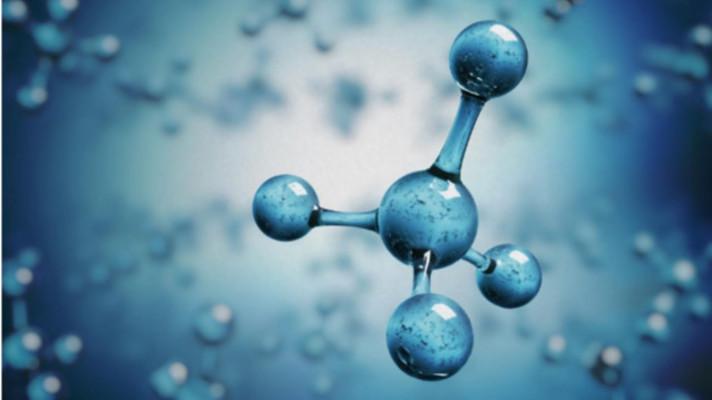Methane: Short-term gains vs long-term pains
The IPCC report published earlier this month thrusts into the spotlight methane (CH4), the second biggest contributor to climate change after carbon dioxide (CO2), capable of trapping heat at a higher rate than any other greenhouse gases. This special attention given to the previously overlooked methane, could very well mark a shift in policy and public focus from CO2 to CH4.
Both methane and carbon dioxide warm the atmosphere, but the two greenhouse gases behave very differently, with methane seen as able to provide quick and cheap solution to cutting GHGs emissions.
A single CO2 molecule causes less warming, but its impact lingers for hundreds of years and accumulates in the atmosphere. The lifespan of methane on the other hand is short-lived, lasting around 12 years, making this otherwise potent gas easier to tackle.
The report singles out CH4 as responsible for almost one-third (0.3C of the 1.1C) of the overall global heating. Methane is not only accelerating climate breakdown, it is also contaminating the air we breathe, generating ground-level ozone that harms people's health, crops, and ecosystems.
So far, no serious action has been taken to limit methane emissions. Now the reduction of human-caused methane emissions in the energy sector is presented as the most rapid and cost-effective approach, implying simple solutions such as stopping the venting of gas and properly sealing equipment. The EU methane strategy proposes the very same approach.
However, energy production is far from being the only sector responsible for CH4 emissions. Present in natural gas and produced when living things decompose, methane comes from a wide range of sources. Tackling emissions from the energy sector is therefore important, but not enough, as it leaves over 80% of methane emissions unaddressed.
Energy focus
Our concern at the EEB is that with most CH4 emissions coming from agriculture, the focus on energy will once again come at the expense of our climate, ecosystems and, in the long term, species.
According to the report, 42% of human-caused methane emissions come from agriculture, mostly from burping livestock, its manure, and paddy fields. Intentional and unintentional leaks of methane from fossil fuel drilling sites, coalmines and pipelines produce 36% of the total and waste dumps cause another 18%.
Methane emissions could be almost halved by 2030 at a reasonable cost, highlighting that 60% cuts could be made from fossil fuel operations. The estimated methane cuts from agriculture were lower at 25%.
The EU Methane Strategy
In the EU, 53% of anthropogenic methane emissions come from agriculture, 26% from waste and 19% from energy.
Similarly, in late 2020 the European Commission presented the Methane Strategy for the European Union, which overlooks the critical agricultural methane, focusing instead on reducing methane emissions in the energy sector.
The Common Agricultural Policy (CAP) has been heavily criticised by the scientific community and the civil society for not aligning with the EU Green Deal ambitions.
Despite the claim that more than 100 billion euro from the CAP budget were spent on climate between 2014 and 2020, greenhouse gas (GHG) emissions from agriculture did not decrease during this same period. Concerning livestock emissions, including methane, the CAP does not seek to limit livestock numbers, nor does it provide incentives to reduce them2.
Proposed solution
To slash agricultural methane, the Commission could start, by targetting 'super-emitters, a similar approach to the energy sector. In agriculture this would mean the livestock farming sector, e.g. large farms with more than 50 livestock units. Such farms account for about 70% of agricultural methane emissions in the EU, and about 40% of all methane emissions.
Many of the measures that can be taken at farm level to slash methane are also effective in reducing ammonia, a hazardous gas in concentrated form coming from manure, slurry and fertilisation, and a precursor of fine particulate matter, the most dangerous form of air pollution.
Practices such as coverage of slurry storages, frequent removal of manure from the stable, small-scale extraction of biogas from slurries, and acidification of the slurry would also improve air quality, as the Clean Air Farming project demonstrated. Still, technical solutions will not be sufficient if they are not accompanied by a reduction in meat and dairy production and consumption.
Call to action
In the past 15 years, EU's methane emissions from agriculture have stagnated and even increased from 2013 to 2017. The EEB has called on EU institutions to establish a new binding EU level target of reducing non-CO2 emissions by at least 20% by 2030, compared to the 2005 level, and proposed a new model for climate policy governance regarding GHG emissions from agriculture and related land use.
If the Commission and our governments were to commit to the implementation of these measures at farm level and to effectively monitoring these, it would significantly reduce air pollution and green gases from agriculture.
Zdroj: European Environmental Bureau
